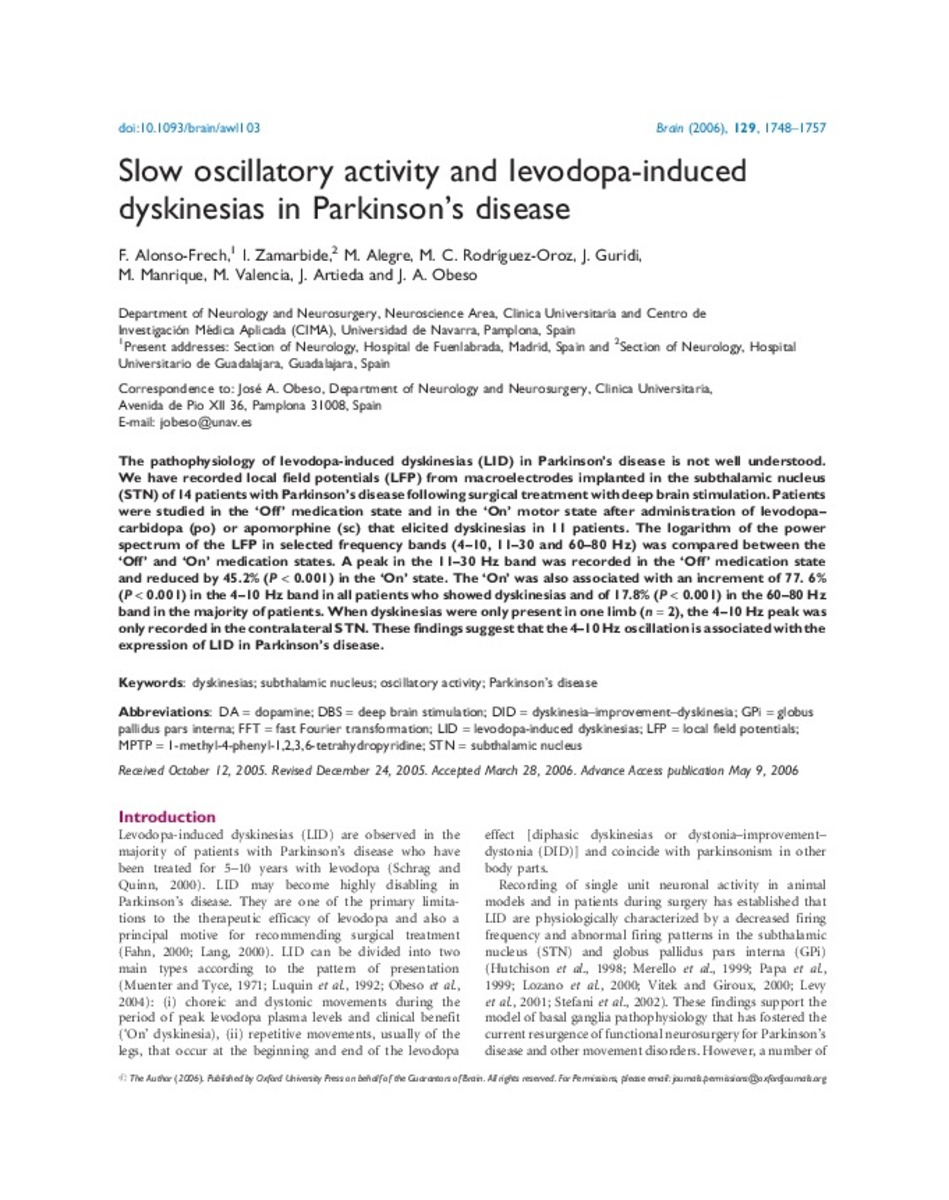Slow oscillatory activity and levodopa-induced dyskinesias in Parkinson’s disease
Palabras clave :
Dyskinesias
Subthalamic nucleus
Parkinson’s disease
Fecha de publicación :
2006
Editorial :
Oxford University Press
Cita:
Alonso-Frech F, Zamarbide I, Alegre M, Rodriguez-Oroz MC, Guridi J, Manrique M, et al. Slow oscillatory activity and levodopa-induced dyskinesias in Parkinson's disease. Brain 2006 Jul;129(Pt 7):1748-1757.
Aparece en las colecciones:
Estadísticas e impacto
0 citas en

0 citas en

Los ítems de Dadun están protegidos por copyright, con todos los derechos reservados, a menos que se indique lo contrario.









